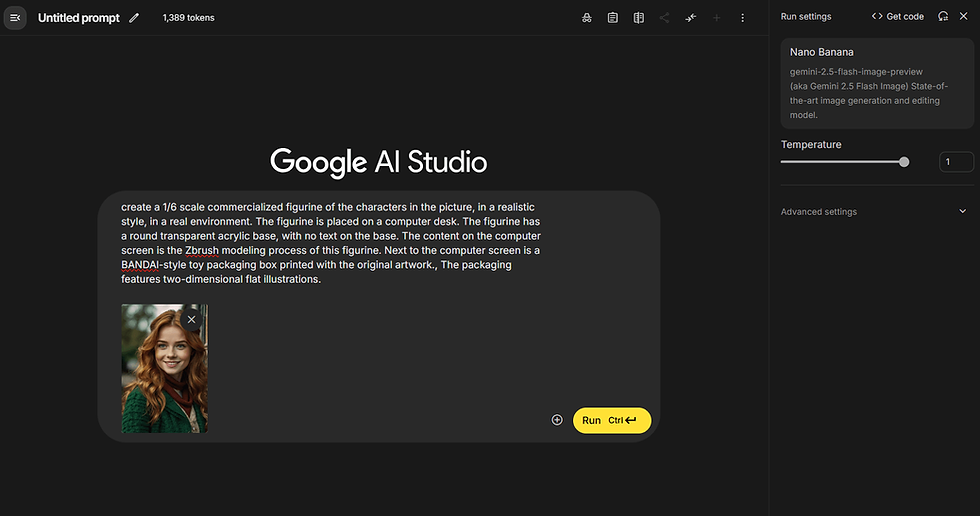How to Develop a Mobile App in 2025 (Step-by-Step Guide)
- Abhinand PS
.jpg/v1/fill/w_320,h_320/file.jpg)
- Jul 23
- 4 min read
How to Develop a Mobile App in 2025: A Complete Beginner’s Guide
In 2025, mobile apps are more than just digital tools—they’re entire businesses. Whether you're a startup founder, a freelancer, or a curious entrepreneur, developing a mobile application has never been more accessible—or more competitive.

With the rise of AI tools, no-code platforms, and smarter development frameworks, you can now create high-performance apps with fewer resources and less time.
In this guide, we’ll break down how to develop a mobile app in 2025 from idea to launch using modern tools, low-code strategies, and user-first design thinking.
🚀 Quick Table: Key Steps to Develop a Mobile App in 2025
Step | What to Do | Recommended Tool/Action |
1. Validate your app idea | Conduct market & competitor research | Use Google Trends, App Radar, or Ubersuggest |
2. Choose your tech stack | Native, hybrid, or no-code | Flutter, React Native, or Base44 |
3. Design the UI/UX | Build wireframes and prototypes | Figma, Adobe XD, or Sketch |
4. Develop the MVP | Focus on core features first | Use a low-code AI builder like Base44 |
5. Test & debug | Ensure cross-platform compatibility | Use BrowserStack, Firebase Test Lab |
6. Deploy to app stores | Publish on Android & iOS | Google Play Console, Apple App Store Connect |
7. Market & improve | Use user feedback and analytics | Mixpanel, OneSignal, Hotjar |
Why Build a Mobile App in 2025?
The mobile app economy is projected to surpass $750 billion globally in 2025, with growth driven by AI, 5G, and consumer demand for better digital experiences. But here's what makes this the perfect time to develop an app:
📱 Low-code AI platforms like Base44 simplify app logic and backend tasks
🌍 Global app stores provide instant market access
🤖 Automation tools reduce maintenance overhead
💡 Access to open-source libraries speeds up development
Step-by-Step Guide to Building a Mobile App in 2025
Step 1: Validate Your App Idea
Before you write a single line of code, validate your idea. Ask:
What problem does this app solve?
Who are the target users?
Are there similar apps, and how is yours different?
Tip: Use platforms like Google Trends, AnswerThePublic, and Play Store reviews to understand demand.
Step 2: Choose the Right Development Approach
🧱 Native vs Hybrid vs No-Code
Approach | Pros | Cons |
Native | Best performance, full features | Expensive, longer dev time |
Hybrid (e.g., Flutter) | Fast dev, good UI/UX | May have limited native functionality |
No-code/Low-code (e.g., Base44) | Easy, fast, affordable | Ideal for MVPs and business apps |
For beginners or startups, low-code AI platforms like Base44 offer an unbeatable balance of speed, scalability, and cost-efficiency.
Step 3: Design the User Interface
A well-designed UI/UX can make or break your app. Use Figma or Adobe XD to:
Map out user journeys
Create interactive prototypes
Test UI with real users
Pro tip: Use mobile-friendly font sizes, accessible colors, and clear CTAs.
Step 4: Build the MVP (Minimum Viable Product)
Focus only on core features like login, user dashboard, and main functionality. Avoid feature bloat.
Tools like Base44 help you automate workflows, create chatbots, and even plug into databases without writing backend code.
Step 5: Test Thoroughly
Don't skip this. Bugs kill user retention. Use:
Firebase Test Lab for automated device testing
BugSnag for real-time crash reports
UserTesting for real human feedback
Step 6: Launch to the App Stores
For Android, use Google Play ConsoleFor iOS, go through Apple Developer Program ($99/year)
Make sure to:
Write keyword-rich descriptions
Use high-quality app screenshots
Enable ratings and reviews
Step 7: Promote, Analyze, and Improve
Once live, use:
Mixpanel for usage tracking
OneSignal for push notifications
Google App Campaigns for paid growth
Respond to feedback, update regularly, and keep your app lightweight.
Tools to Watch for in 2025
Base44: No-code AI app automation
Flutter 4.0: For ultra-fast hybrid apps
Supabase: Firebase alternative for real-time backend
Appsmith: Open-source dashboard builder
Expo: For React Native developers
Internal Links You Might Like
AI Tools That Power App Development in 2025
How to Monetize Your App Without Ads
Top Affiliate Programs for App Developers
📌 Final Thoughts: You Don’t Need to Be a Developer to Build Apps in 2025
Whether you're launching a startup or solving a community problem, the tools in 2025 are designed to empower non-coders, speed up development, and reduce launch costs.
Platforms like Base44 are game-changers—allowing you to focus on what matters: solving real problems for real users.
🙋♂️ FAQ: Mobile App Development in 2025
How much does it cost to develop a mobile app in 2025?
A basic app can cost anywhere from $1,000 to $15,000, depending on features. Using low-code tools like Base44 can reduce this by up to 70%.
Can I build an app without coding?
Absolutely. Platforms like Base44 offer drag-and-drop interfaces to build full-featured apps using AI.
What programming languages are best for mobile apps?
In 2025, the top choices include:
Flutter (Dart) for cross-platform
Swift for iOS
Kotlin for Android
React Native (JavaScript/TypeScript) for hybrid apps
How long does it take to launch an app?
On average, 2–4 months for a basic MVP. With low-code tools, even faster—2–4 weeks.
Which platform is better: iOS or Android?
Start with Android if you're targeting global markets. iOS is ideal for premium and monetized apps in North America and Europe.



Comments